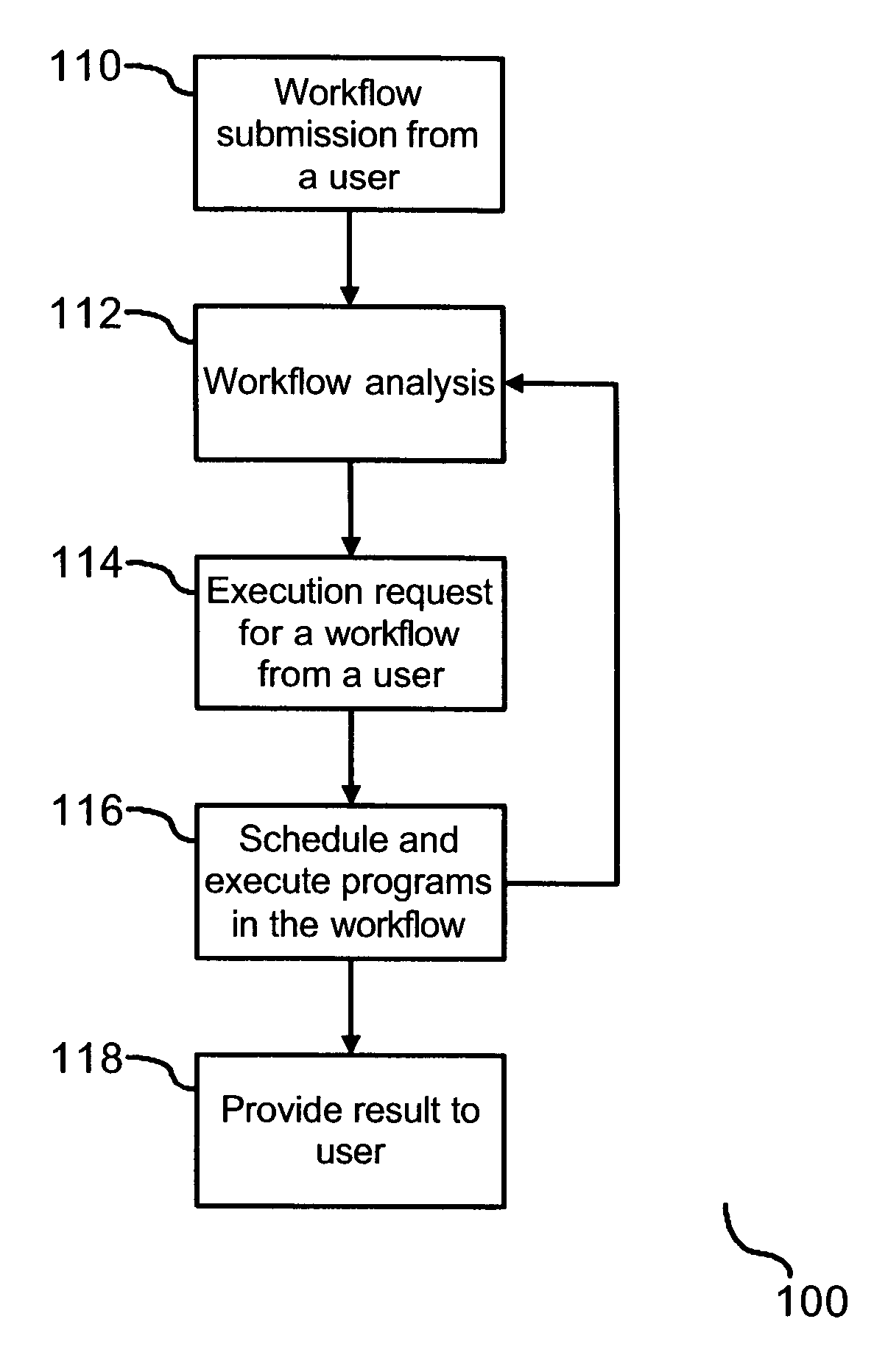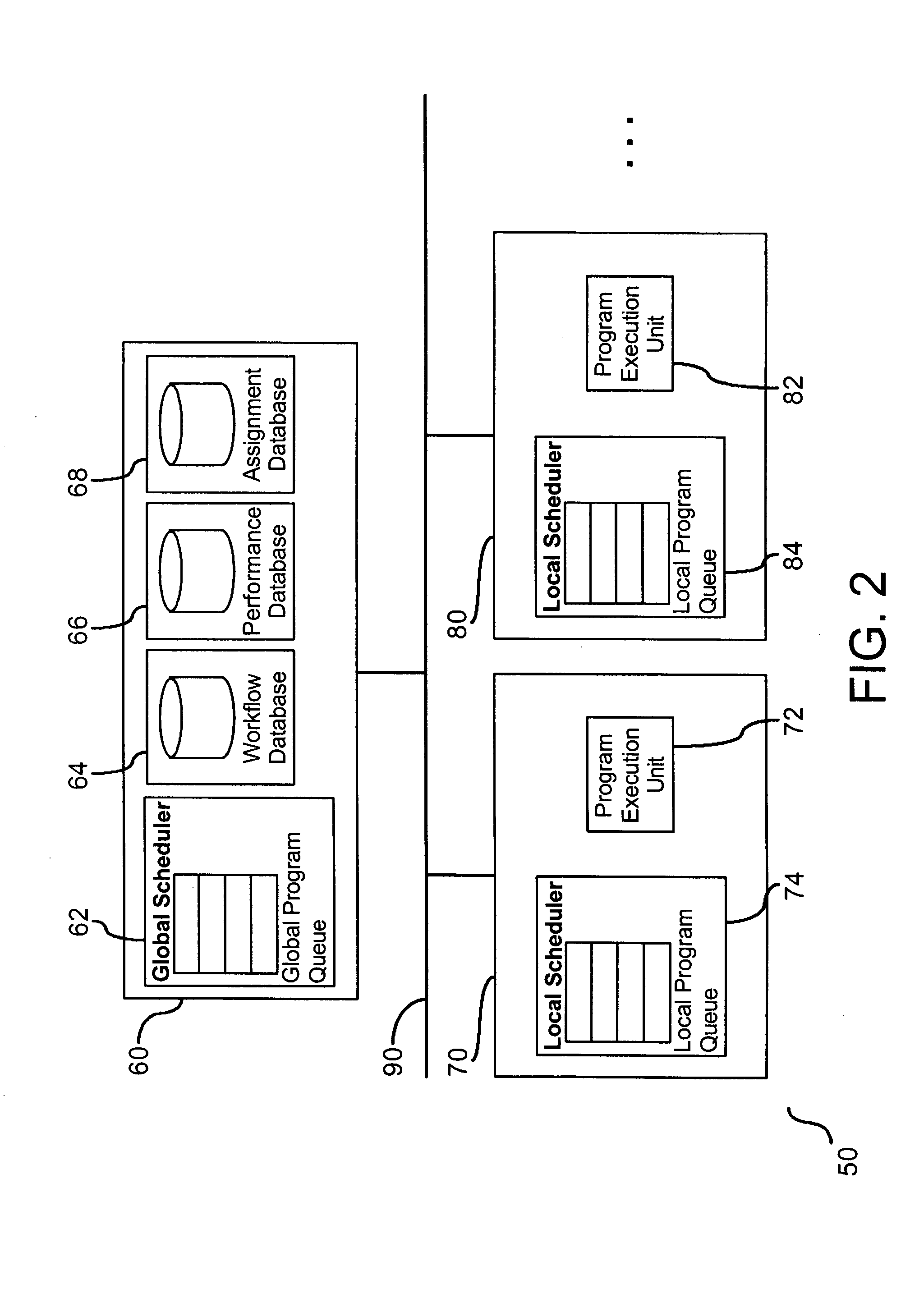Method for dynamic scheduling in a distributed environment
- Summary
- Abstract
- Description
- Claims
- Application Information
AI Technical Summary
Benefits of technology
Problems solved by technology
Method used
Image
Examples
Embodiment Construction
Technical Details
[0020] A grid environment (50) is shown in FIG. 2 and is composed of a global scheduler (60) and a plurality of program execution units (70) and (80), known as nodes. Although only two nodes are shown, more nodes may be addressed to the system. Each node has a program execution unit (72) and (82), respectively, and a local scheduler (74) and (84) that has a local program execution queue (not shown) to manage execution of programs assigned to the respective node. The nodes (70) and (80) communicate with each other and the global scheduler (60) across a local or wide area network (90). An execution request for a program is made to the centralized scheduler (60) which assigns the program to one of the nodes (70, 80) in accordance with a state of each node to execute the program. The centralized scheduler (60) includes a wait queue (62), a workflow database (64), a performance database (66), and an assignment database (68). Each of the nodes (70) and (80) provide proce...
PUM
 Login to View More
Login to View More Abstract
Description
Claims
Application Information
 Login to View More
Login to View More - R&D
- Intellectual Property
- Life Sciences
- Materials
- Tech Scout
- Unparalleled Data Quality
- Higher Quality Content
- 60% Fewer Hallucinations
Browse by: Latest US Patents, China's latest patents, Technical Efficacy Thesaurus, Application Domain, Technology Topic, Popular Technical Reports.
© 2025 PatSnap. All rights reserved.Legal|Privacy policy|Modern Slavery Act Transparency Statement|Sitemap|About US| Contact US: help@patsnap.com



